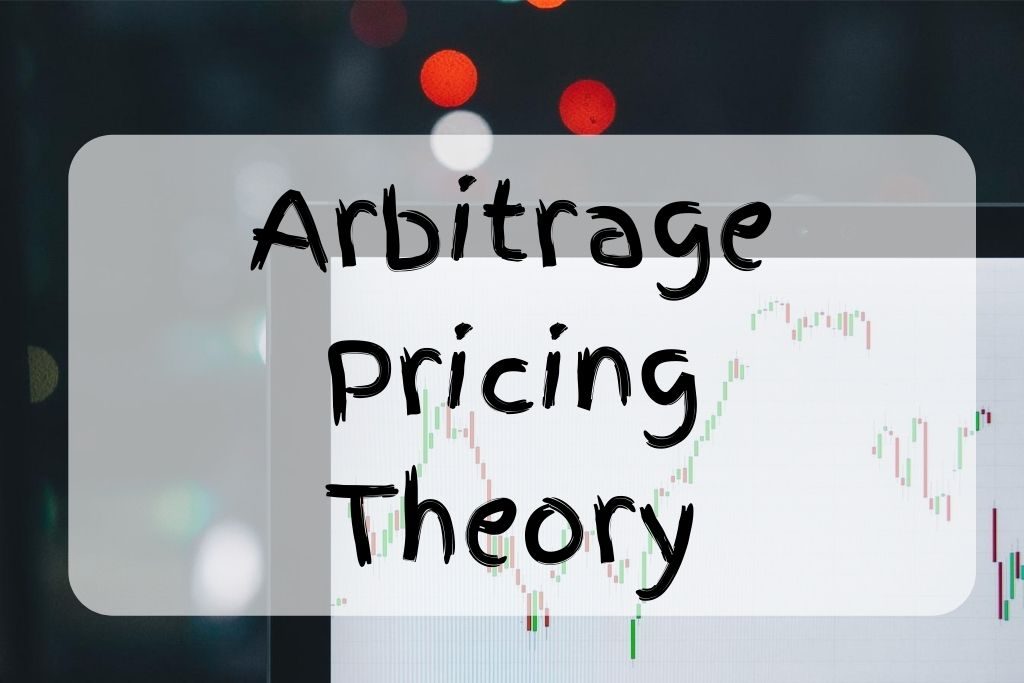What Is Arbitrage Pricing Theory?

Definition of the Arbitrage Pricing Theory
- The Arbitrage Pricing Theory is a method used to estimate the returns on assets and portfolios.
- It is a model based on the linear relationship between an asset’s expected risk and return.
- The model projects how changes in macroeconomic variables affect an asset’s returns. These variables include inflation, changes in interest rates, exchange rates, etc.
- It is an alternative theory to the Capital Asset Pricing Model (CAPM). Both the theories explain the relationship between expected return and risk; although, the arbitrage pricing theory is harder to implement
- Arbitrage is the practice of buying an asset at a lower price and simultaneously selling it at a higher price. In theory, arbitrage provides investors with a high chance of success.
Want to learn more financial ratios?
Get the eBook explaining some of the most useful ratios for free now.
What Impacts the Arbitrage Pricing Theory?
- The return on assets is determined by systematic factors such as changes in inflation, risk premiums, interest rates, etc.
- Investors construct portfolios with unsystematic risks, which are well-diversified to reduce total portfolio risk.
- There is no opportunity for arbitrage with the diversification of portfolios. Investors use arbitrage by understanding the differences between the expected and real returns. If the opportunity exists, it would be exploited away by the investors.
How to Calculate the Arbitrage Pricing Theory?
- Investors assign macroeconomic factors that may affect the return on the asset through a regression process.
- The expected return on an asset is determined by the risk-free rate of return with the addition of the asset’s beta to each macroeconomic factor that impacts the return on the asset multiplied by the risk premium of those factors.
ER(x) = Rf + 𝛽1 + RP1 + 𝛽2+ RP2 … + 𝛽n + RPn
(Where ER(x) = expected return on an asset, Rf = risk-free rate of return preferred on risk-free investments, 𝛽n = price sensitivity of the asset to the particular macroeconomic factor, RPn = the risk premium of the particular macroeconomic factor)
Why is the Arbitrage Pricing Theory Important?
- The price of the securities in the market is not efficient, so APT brings out a fair price to the market.
- Missed priced security also allows arbitrageurs to make some gains from it.
The Arbitrage Pricing Theory in Practice
- The value of assets in the market can be evaluated, which helps traders understand other deviations in pricing, before making their trading decisions.
- After analyzing the value of stocks under the Arbitrage Pricing Model, deviations may occur in the price of stocks. For example, the price for Stock A might drop.
- The trader will be able to purchase Stock A with the understanding that the price action in the market will bring it to a fair price.
- With the given information, calculate the expected return using APT.
- GDp growth: ß = 0.8, RP = 3%
- Inflation rate: ß = 0.6, RP = 4%
- Gold prices: ß = -0.3, RP = 3%
- Standard: ß = 0.75, RP = 11%
- The risk-free rate is 5%
- Expected return = 5% + (0.8 x 3%) + (0.6 x 4%) + (-0.3 x 3%) + (0.75 x 11%) = 17.15%
Learn some of the most useful financial ratios!
Don’t miss this free eBook.
